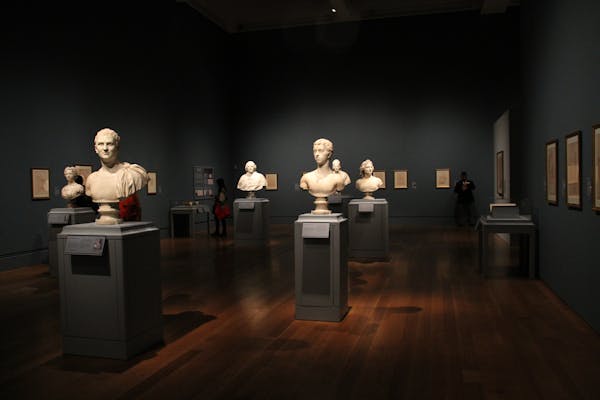Do Museums Actually Pay for Artifacts?, The answer is YES, but it’s a bit more complicated than that.
While museums frequently purchase their artifacts, they can also acquire them through donations, loans, or government assistance. Acquiring artifacts allows museums to preserve and present historical and cultural items for the benefit of the general public. However, the purchase of antiquities is often fraught with controversy, particularly regarding cultural appropriation and the illegal trade of artifacts.
In this article, I will delve into the topic and answer the question: “Do museums buy artifacts?” And if YES, then, “Do museums pay for artifacts?”
Table of Contents
Do Museums Actually Pay for Artifacts?
The Acquisition of Artifacts by Museums
Incredible artifacts that museums display often attract and excite individuals who adore history and culture. However, have you ever considered how museums truly obtain these artifacts? It’s more complicated than simply going into a store and picking them up off the shelf.

Actually, there are various ways for museums to get artifacts:
- Purchases from Private Collectors or Dealers
Museums often acquire rare or unique artifacts by purchasing them from private dealers or collectors. However, buying artifacts can be costly, and museums must ensure they are not encouraging the illegal trade of stolen or plundered goods. - Donations
Individuals or organizations can donate artifacts to museums for various reasons, such as educating the public about their cultural or historical significance or taking advantage of tax benefits. Museums often enter into donor agreements with contributors to clarify the circumstances of the donation, including the transfer of ownership and any constraints on the use of the artifact. - Loans from Other Organizations
Museums might acquire artifacts by borrowing them from other organizations for temporary exhibitions. This enables museums to display a broader range of items without having to buy or acquire them long-term. However, lending antiquities entails its own set of risks and obligations, including ensuring proper care and return of the borrowed items. - Government Funding and Grants
Museums can also buy items with help from grants or government funding. These resources can be used to purchase artifacts outright or facilitate their acquisition through other channels, such as loans or donations. To receive these grants, museums usually need to apply and meet specific criteria.
Donation of Artifacts to Museums
Have you ever thought about giving a piece of art to a museum? Donating artifacts can be an excellent way to share cultural or historical treasures with the public and can even be financially beneficial.
Key Considerations for Donating Artifacts:
- Public Education:
One primary reason people donate artifacts is to educate the public about the artifact’s cultural or historical significance. Donations help museums preserve and showcase items that tell the story of our history. - Financial Benefits:
Donations can offer financial advantages, such as tax deductions. However, it’s crucial to ensure that the museum is capable of properly caring for the artifact and is interested in accepting it. Not all museums have the space or resources to accept every donation. - Donor Agreements:
As ownership transfer to the museum is often necessary, museums typically enter into donor agreements with contributors. These contracts detail the terms of the donation, including ownership transfer and any limitations on the artifact’s use. It’s important to read and understand these agreements thoroughly before making a donation.
The Loan of Artifacts to Museums
Have you ever visited a museum and seen an object on loan from a different organization? In the museum world, loaning artifacts is a common practice that allows museums to display a greater variety of items without having to acquire them permanently.
Key Considerations for Loaning Artifacts:
- Responsibilities and Obligations:
When a museum lends an object, it entrusts the borrowing museum with the care and storage of the item. The lending museum must ensure that the borrowing institution has the resources, personnel, and safety measures necessary to care for the artifact properly. - Loan Agreements:
Museums often enter into loan agreements that outline the terms of the loan. These agreements may include details such as the loan duration, insurance requirements, and any associated costs. Both parties must carefully review and understand these terms before agreeing to the loan.
How Much Do Museums Pay for Artifacts? – The Use of Government Funding and Grants to Acquire Artifacts
Have you ever stopped to consider where museums get the funding to acquire artifacts? Many museums rely on government funding or grants from foundations to support the acquisition of artifacts. Some museums may also have their own endowments or financial sources.
Key Sources of Funding:
- Government Funding:
Museums can receive funding from various government sources, including state, local, and federal agencies. They may apply for grants or funds to support their efforts to acquire artifacts. To be eligible for these funds, museums often need to meet specific criteria, such as demonstrating the cultural or historical relevance of the artifacts. - Foundation Grants:
Foundations are independent organizations that fund a range of initiatives, including arts and culture. Museums can apply for foundation grants to help with artifact acquisition, but they must meet certain requirements, which may be similar to those for government grants.
Securing funds for artifact acquisition can be challenging and time-consuming. Museums must be prepared to invest time and resources in the application process, with careful planning and a compelling case for the value of the artifacts.
Do Museums Pay for Artifacts? The Controversy Surrounding the Acquisition of Artifacts by Museums
The acquisition of artifacts by museums is often surrounded by controversy, especially regarding cultural appropriation and the illegal trade of artifacts. Museums face the difficult task of balancing the preservation and dissemination of cultural and historical artifacts with respecting the rights and cultural heritage of the communities from which they originate.
Do You Get Paid if You Find an Artifact?
It depends on where you live and the laws of that country. In some countries, such as the United Kingdom, you must report treasure to the local coroner within a certain time frame. If a museum wants the treasure, they will assess its value, and you may be eligible for a share of the reward.
In other countries, such as the United States, anything found on your property belongs to you. In some countries, archaeological artifacts are considered cultural property and belong to the nation rather than the person who finds them.
It’s important to check the laws of your country to determine what you should do if you find an artifact.

I am Monica, the enthusiastic explorer behind funthingsworld.com. With a degree in Leisure and Recreation Management and over 5 years of diving into thrilling adventures, I’ve made it my mission to uncover the best and most exciting activities around the globe.
Stay connected and get a sneak peek into my adventures on Instagram: @mongjerde










